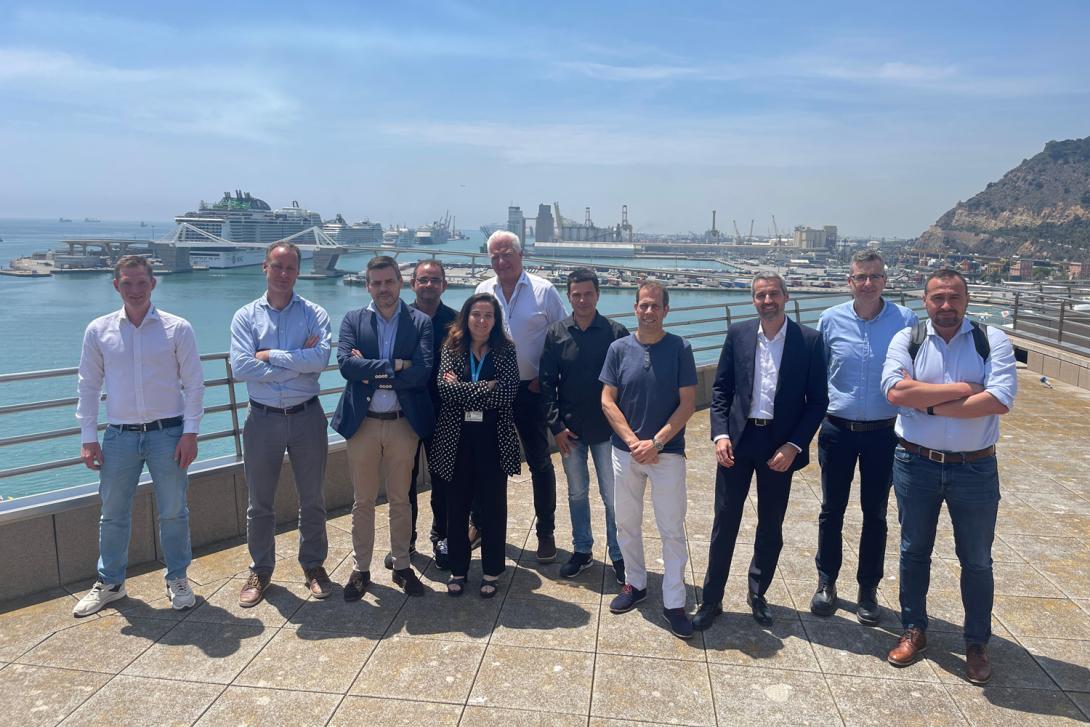The Port of Barcelona and VINCI Energies Spain start building the pilot project to provide electrical power to ships in the Barcelona Ferry Terminal
The Port of Barcelona has awarded the pilot project to the Joint venture Omexom Puerto de Barcelona (Tecuni SAU, Inove Ingenieria SA, GTIE Synertec SAS and Actemium Electro AB) for €3,559,738.28, excluding VAT.
With this project, the Barcelona Ferry Terminal will have two docking points equipped with OPS systems to supply ships with electrical energy of 100% renewable origin.

The Port of Barcelona and VINCI Energies Spain have started work on the construction project of the pilot project to provide electrical power to ships at the Barcelona Ferry Terminal. The Port of Barcelona has awarded the pilot project to the Joint venture Omexom Puerto de Barcelona (Tecuni SAU, Inove Ingenieria SA, GTIE Synertec SAS and Actemium Electro AB), comprising companies from VINCI Energies, the global leader for digital and energy transition solutions. The project is part of the first phase of the Nexigen Wharf Electrification Plan performed by the Port of Barcelona. The tender includes the drafting and performance of the project, and the connection and disconnection service of the vessels and the maintenance of the facility. The contract was awarded for €3,559,738.28, excluding VAT.
With this project, the Barcelona Ferry Terminal will have two berthing points equipped with OPS systems to supply ships with 100% renewable electrical energy, allowing them to turn off their engines during their stay at port, avoiding polluting emissions. The OPS of the Barcelona Ferry Terminal will be operational in September 2024.
On 30 May, the first meeting was held between the Port of Barcelona team developing the pilot project, led by Ana Arévalo, Energy Transition Manager, and that of VINCI Energies Spain, led by Carlos Muñoz, who is responsible for this contract.
During the meeting, the teams from the Port of Barcelona and VINCI Energies Spain laid the foundations for performing the construction project, in accordance with the tender, and visited the Barcelona Ferry Terminal to check the specifics of the project on the ground. The meeting was also attended by the Grimaldi technical team in charge of adapting the Ciudad de Palma ship for its wharf connection.
Ana Arévalo explained that, with work beginning on the installation of the OPS systems at the Barcelona Ferry Terminal, “we are continuing to advance in the electrification process. It is another important step for our port. Much work still remains to be done, but our impressions after the meeting with the successful bidder are very positive. The company has a solid experience in rolling out OPS systems and we are fully confident that this project will be a real game-changer”.
Alejandro García, Director of Hydro and Ports at VINCI Energies Spain, underscored the importance of this project, saying that “it will allow the Port of Barcelona to take advantage of the know-how and experience of VINCI Energies Spain in implementing this type of system and will bring operational advantages for the ferries that berth in them as well as for the environment of the city of Barcelona”.
VINCI Energies Spain has taken part in the implementation of 39 OPS systems worldwide (21 in Sweden, 11 in France, 4 in Norway, 2 in the United Arab Emirates and 1 in Denmark), which have all shown a significant improvement in quality of life in their cities, with a reduction in both noise pollution and emissions (according to calculations made by Puertos del Estado, the reduction in emissions per ship is 96% for NOx, 8 % for SOx, 94% for particulates and 64% for CO2).
Nexigen
With an initial investment of over €110 million, the Wharf Electrification Plan is among the key projects promoted by the Port of Barcelona to halve CO2 emissions from port operations by 2030 and become a carbon neutral port by 2050. This plan, known as Nexigen, will make it possible to connect ships to the general electricity grid while berthed, using clean energy that is certified 100% renewable.
Now, the awarding of the Barcelona Ferry Terminal pilot project marks a decisive step in realising the first OPS (onshore power supply) points that will work at the Port of Barcelona's passenger wharves. The Port's first OPS points are already in operation at the MB92 Barcelona facilities and work has begun at Hutchison Ports BEST to install what will be the first OPS for container ships in southern Europe.



